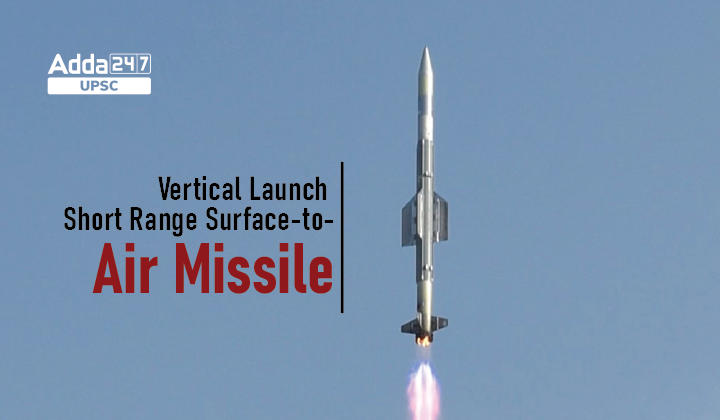Table of Contents
Vertical Launch Short Range Surface-to-Air Missile- Relevance for UPSC Exam
General Studies III- Various Security forces and agencies and their mandate.
In News
The indigenously-developed ship-borne weapon system, Vertical Launch Short Range Surface to Air Missile (VL-SRSAM), was successfully flight tested by the Defence Research and Development Organization (DRDO) and Indian Navy off the Chandipur coast in Odisha.
Vertical Launch Short Range Surface to Air Missile (VL-SRSAM)
- VL-SRSAM has been designed and developed jointly by three facilities of the Defense Research and Development Organization for deployment of Indian Naval warships.
- The key DRDO facilities that contributed to the development of the system are Defense Research and Development Laboratory (DRDL) and Research Centre Imarat (RCI), both from Hyderabad, and Research & Development Establishment (Engineers) based in Pune.
- The missile has the capability of neutralizing various aerial threats at close ranges including sea-skimming targets.
- The tactic of sea skimming is used by various anti-ship missiles and some fighter jets to avoid being detected by the radars onboard warships and thus, these assets fly as close as possible to sea surface and thus are difficult to detect and neutralize.
The design of VL-SRSAM
- The missile has been designed to strike at the high-speed airborne targets at the range of 40 to 50 km and at an altitude of around 15 km.
- Its design is based on Astra missile which is a Beyond Visual Range Air to Air missile.
- Two key features of the VL-SRSAM are cruciform wings and thrust vectoring.
- The cruciform wings are four small wings arranged like a cross on four sides and give the projective a stable aerodynamic posture. The thrust vectoring is an ability to change the direction of the thrust from its engine controlling the angular velocity and the attitude of the missile.
- VL-SRSAM is a canisterised system, which means it is stored and operated from specially designed compartments.
- In the canister, the inside environment is controlled, thus making its transport and storage easier and improving the shelf life of weapons.
Significance
- In Naval warfare, a warship has to employ various defense mechanisms to protect itself from anti-ship missiles and adversary aircraft.
- One of the age-old methods is chaffs — which is a countermeasure technology used worldwide to protect naval ships from enemy’s radar and Radio Frequency (RF) missile seekers.
- Another method is deploying missiles to counter Anti-Ship missiles. These systems have to have a swift detection mechanism, quick response, high speed and high manoeuvrability.
- The VL-SRSAM claims to have all these qualities.




 TSPSC Group 1 Question Paper 2024, Downl...
TSPSC Group 1 Question Paper 2024, Downl...
 TSPSC Group 1 Answer key 2024 Out, Downl...
TSPSC Group 1 Answer key 2024 Out, Downl...
 UPSC Prelims 2024 Question Paper, Downlo...
UPSC Prelims 2024 Question Paper, Downlo...




